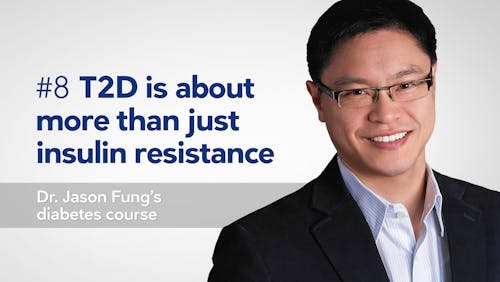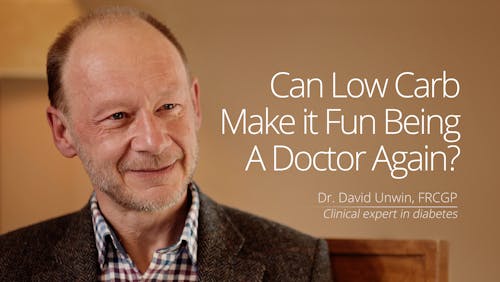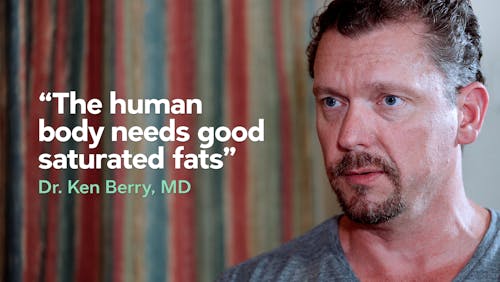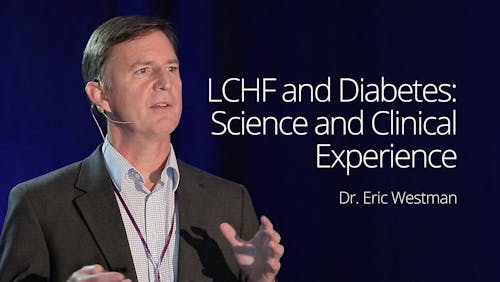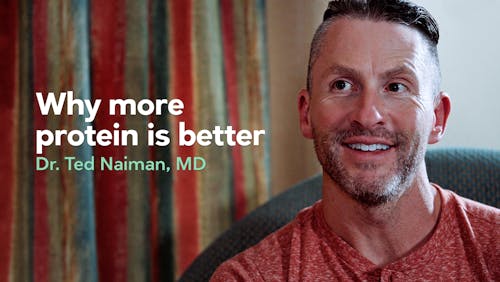Dr. Hampton: Are pollutants in your food and surroundings?

Dr. Tony Hampton is a family physician on the South Side of Chicago. He is writing a monthly column for Diet Doctor. This is his 14th column.
Some are blatantly in front of us, like cigarette smoke and car exhaust, and others are more hidden from view, lurking in our food and water or lingering in our air or soil. Do you know where you potentially may be exposed to toxic substances in your life?
In my R.O.P.E. acronym, the “P” stands for pollutants. In short, know where they are and do what you can to remove them from your diet and your life.
(For those of you who are reading my column for the first time, I have two acronyms I use with my patients to help them focus on the things that can make them healthier. The first is “Protect your N.E.S.T.” in which the letters stand for Nutrition, Exercise, Sleep/Stress, and Thoughts/Trauma. The second is “Use your R.O.P.E. to get to your N.E.S.T.” The letters for R.O.P.E. are Relationships, Organisms, Pollutants, and Emotions.)
You may feel you are doing everything right as far as your diet, exercise, sleep, and stress are concerned. Still, if you are knowingly or unknowingly harming yourself by repeated exposures to toxic substances, your efforts may be undermined.
This column is about known pollutants, suspected pollutants, and possible pollutants where evidence is not yet clear, but perhaps we should approach them with a bit more caution.
The pollutants you knowingly consume
Do you smoke tobacco, take recreational drugs, or drink alcohol to excess regularly?
It goes without saying that if you are addicted to tobacco or drugs, your health will benefit if you get these toxic substances out of your life. If you find it hard to quit on your own, seek help from your doctor, who can link you to resources and support.
Drinking alcohol is a social part of many people’s lives. At low to moderate levels, consumption may have some cardiovascular benefits or at least cause minimal harm.
But drinking at excessive levels, either all at once in a binge, or regularly over a long time, is definitely a known toxin that is hazardous to your health. If you can’t cut back your alcohol consumption on your own, seek professional help.
Most of you reading this will also have decided that too many carbs in your life — especially excess sugar — is not good for you. While not a “pollutant” per se, too many carbs can definitely be a harmful, toxic substance to people with metabolic syndrome. Too many carbs, especially higher glycemic index carbs, get digested into glucose and/or fructose and may contribute to inflammation, insulin resistance, type 2 diabetes, fatty liver, and other metabolic conditions.
You should also be aware of compounds called AGES – advanced glycation end products. These are created when glucose sticks to proteins or fat, especially under high-heat cooking (think charred burgers.) Also called glycotoxins, AGES in excessive amounts have been linked to inflammation, arterial damage, insulin resistance, and type 2 diabetes. Practical tips for avoiding AGES include cooking with lower temperatures, using shorter cooking times, cooking with moist heat, or cooking with an acid such as lemon or vinegar.
The pollutants imposed upon you
We have less ability to control our exposure to some pollutants, especially if we come from poor or disadvantaged populations.
Unclean water, smog from cars and industry, contaminated soils, and other industrial pollutants may all be thrust upon individuals and populations who have little resources to escape from them.
Take lead. Across the US, lead pipes and lead paint, especially in inner cities and older housing, are hazardous to children and pregnant women. It’s estimated more than 10 million US households and 400,000 schools still have their water delivered in lead pipes. More than 24 million homes may still have lead paint.
Fortunately, a concerted effort is now underway to clean up this source of a potent neurologic toxin over the next 10 years. Getting sources of lead contamination out of lives is relevant to older housing stock inhabited by the population I serve in Chicago’s disadvantaged South Side.
Plastic pollutants
I am personally concerned, along with many others, about the plastic pollutants that are all around us. We consume plastic residues in our food and drink.
A substance called BPA (bisphenol A) has been used in food packaging in the US and other manufacturing since the 1960s, and exposure to it is widespread. It has been found in the urine of 93% of people over the age of 6. It’s a concern for its potential (although unproven) impact on child development, sex hormones, and brain development.
While the FDA maintains BPA is safe at low levels, manufacturers are increasingly removing it voluntarily due to consumer demand. Look for items labeled “BPA-free.”
Phthalates are another potentially concerning plastic compound found in hundreds of products. They are a group of chemicals used in a wide variety of industrial processes that make plastic more flexible. They’re used as a preservative in a wide array of personal care products like shampoo and lotions. The Center for Disease Control notes in a fact sheet : “Some types of phthalates have affected the reproductive system in animals. Human health effects from exposure to low levels of phthalates are not as clear.”
We are also exposed to microplastics from the breakdown of a vast array of plastic products. One 2019 research review estimates the average American eats, drinks, and breathes in more than 74,000 particles of microplastic every year.
Although it is unclear what the direct health impact is from exposure to plastics, to be on the safe side the best advice is to try to reduce your use of plastics as much as possible. Do not microwave food in plastic containers or put them in the dishwasher (the hot water breaks them down faster.) Don’t store hot food in plastic. Try to minimize your food that comes wrapped in plastic. Use more glass containers to store or reheat food.
Emerging potential pollutants
Every day, new food products are coming to market. In particular, we’ve seen a rapid rise in the number of plant-based proteins and plant-based “meat” being developed.
These are highly-processed foods, often with ingredients lists of dozens of items, some new to human consumption.
Take, for example, leghemoglobin. That is the compound that gives the plant-based Impossible Burger its red color and that “real burger” bleeding effect. It’s derived from the root nodules of the soybean plant and has not historically been eaten by humans. It is mass-produced via fermentation in an industrial lab process. Food scientists have sequenced the leghemoglobin gene and manipulated a fungus to make it churn out the leghemoglobin compound.
I learned a lot about leghemoglobin after being asked to join author, filmmaker, and whole-food advocate Vinnie Tortorich in his new documentary, Beyond impossible . (The documentary was released in mid-January 2022, and you can watch it on Amazon Prime . I also spoke with Tortorich on my Youtube podcast in January.)
Tortorich and others have noted that no long-term studies in humans have ever been conducted on leghemoglobin. The manufacturer submitted its application for approval based solely on a 28-day rat study. However, the FDA has approved leghemoglobin as “a color additive in ground beef analogue products” and has ruled it is safe at low levels of human consumption.
Is leghemogloblin harmful to humans? Who knows? We hope not, but it would not be the first time that a new food substance in widespread use was eventually found to be harmful. (Remember trans fats?)
As a general rule, it’s wise to limit eating highly processed foods for a wide variety of reasons. Eating low-carb whole foods as close to their natural state as possible is not only good for your blood sugar and waistline, but it reduces your exposure to new food compounds and combinations that we simply know too little about.
To sum up, do what you can to know where the potential pollutants are in your life, and try to minimize them or remove them.
Until next time, remember to protect your N.E.S.T.!

